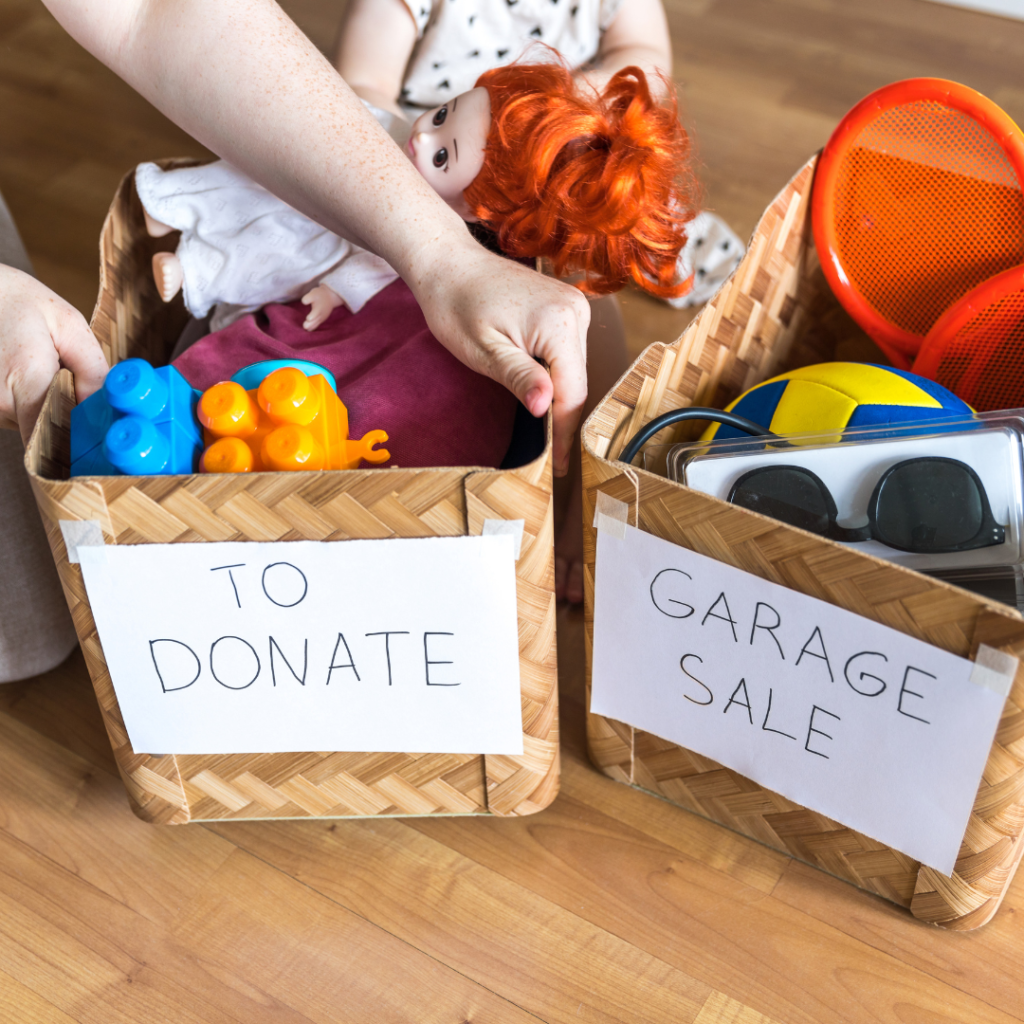
Decluttering your home can have a transformative impact on your life and community. Not only does it create a more organized and peaceful living space for you, but it also presents an opportunity to make a meaningful difference through donation.
In this blog post, we will walk you through 10 comprehensive steps to decluttering your home and guide you on how to make a positive impact by donating your items. From getting started with the decluttering process to finding the right organizations to donate to, we’ll cover it all.
By following these steps, you’ll not only achieve a clutter-free home but also contribute to the well-being of others. Let’s delve into the process of decluttering and donation, and explore the incredible benefits it brings to you and your community.
Before diving into the decluttering process, take a moment to identify the areas in your home that require attention. Start by recognizing spaces that are prone to clutter, such as closets, the garage, or even the kitchen countertops. Prioritize these areas based on the impact decluttering them will have on your daily life.
Once you’ve identified the problem areas, it’s crucial to establish clear objectives for your donations. Consider the significance of your contributions and how they can have a positive impact. Perhaps your goal is to support a local charity, assist families in need, or contribute to a cause that resonates with you personally.
Setting specific donation objectives will not only guide your decluttering process but also provide a sense of purpose and motivation. It’s a way to make a meaningful difference through your actions. By aligning your goals with the impact you aim to make, you’ll find greater satisfaction in the decluttering and donation journey.

Remember, defining your objectives before embarking on the decluttering process helps you stay focused and motivated, ensuring that your efforts yield the desired outcomes.
Embrace this initial step as an opportunity to set the tone for a purposeful and impactful decluttering experience. Once you’ve established your goals, you’re ready to move forward with a clear vision in mind.
When it comes to decluttering your home, sorting and categorizing your belongings effectively is a crucial step. By organizing your items into specific categories, such as keep, donate, recycle, and discard, you can streamline the decluttering process and make informed decisions about each item.
One efficient strategy for sorting your belongings is to use the ‘four-box method.’ Label four boxes as Keep, Donate, Recycle, and Discard. As you go through your belongings, place each item into the appropriate box based on its condition and your decision on whether to keep, donate, recycle, or discard it.
To avoid spending too much time on each item, consider setting time limits for decision-making. For example, give yourself a few minutes to decide whether to keep, donate, recycle, or discard an item. This approach can help prevent indecision and keep the process moving forward.
By utilizing these effective sorting strategies, you can make the categorization process more manageable and ensure that each item is handled with purpose and efficiency.
Remember, the goal of sorting and categorizing your belongings is to make the decluttering process as smooth and straightforward as possible, enabling you to make meaningful decisions about each item while maintaining a steady pace.

When decluttering your home, it’s crucial to tackle one room at a time. This approach not only prevents overwhelm but also allows you to see visible progress, keeping you motivated throughout the process.
Start by removing all items from the closet. Assess each item and ask yourself if it’s something you currently use or wear. If not, consider donating it to local shelters or thrift stores. Use storage solutions such as bins or organizers to neatly arrange the remaining items.
Begin by decluttering countertops and cabinets. Discard expired food items and donate kitchenware that you no longer use. Utilize drawer dividers and shelf organizers to create a more functional and organized space.
For living rooms or other common areas, focus on reducing excess decor and furniture. Keep only the items that serve a purpose or hold sentimental value. Consider donating lightly used furniture to charities that support families in need.
By decluttering room by room, you can effectively maintain focus and witness a noticeable difference in each space.
Remember, the goal is to create a living environment that brings you joy and reflects your current lifestyle.
Please note that before donating, it’s essential to ensure that the items are in good condition and meet the donation guidelines of the recipient organization.
For more guidance on sustainable decluttering and donation practices, refer to donation organization’s guide.
When it comes to decluttering your home and making a difference through donation, it’s essential to evaluate your donation options carefully. Researching local charities and organizations is a crucial step in ensuring that your donations are effectively utilized and contribute to causes that align with your values.
Before donating, take the time to research and identify reputable charities and organizations in your local area. Here are some ways to find the right fit for your donations:
Choosing the right donation option for different types of items is equally important. For example, clothing and household items may be suitable for local thrift stores or shelter donations, while specialized items like medical equipment could be donated to relevant organizations or medical centers. Consider the specific needs of each charity or organization and how your donations can best serve their cause.
Remember, the goal is not just to declutter your home but also to make a positive impact through your donations. By carefully researching and selecting the right charities and organizations, your contributions can create meaningful change in your community.
Now that you’ve sorted through your belongings and identified items for donation, it’s essential to prepare them properly. Here are the key steps to ensure your donation process is smooth and impactful.

Keeping records of donated items serves multiple purposes. Firstly, it allows you to track your contributions, providing a sense of accountability and fulfillment. Secondly, maintaining accurate records is crucial for tax purposes, especially if you plan to claim deductions for your donations. Organizing and documenting each donated item, along with its estimated value, can make the tax filing process less daunting and help you maximize your deductions.
By maintaining thorough donation records, you can also monitor the impact of your contributions over time. This tangible record not only highlights the positive change you are making but also serves as a personal reminder of your generosity and the lives you’ve touched.
Remember, maintaining detailed donation records not only benefits you but also helps the receiving organizations by providing transparency and clarity regarding the donated items.
By following these simple steps, you can ensure that your donations are well-prepared and have a meaningful impact on those in need.
Now that you’ve prepared your items for donation, the next step is to find reputable organizations to donate them to. Stay tuned for the next section where we’ll explore how to select the right donation centers for your items.
When it comes to decluttering, coordinating the donation drop-off or pick-up is crucial in ensuring your items find a new home where they are needed. For larger items or if you don’t have means of transportation, scheduling a pick-up service can be an excellent option.
If you have larger items such as furniture or appliances that you’d like to donate, scheduling a pick-up service is a convenient solution. Many charitable organizations and donation centers offer this service free of charge. Start by contacting your chosen charity or donation center to inquire about their pick-up service availability in your area. They will provide you with information on the steps involved and the scheduling process. Be sure to prepare logistics for the donation pick-up, such as ensuring someone is available at home during the scheduled pick-up time and providing clear directions for the crew.
By coordinating a pick-up service, you not only simplify the donation process but also contribute to reducing waste by giving your items a new life in a new home. This step enables you to make a difference by ensuring your donations reach those in need.
Remember that by arranging for a pick-up service, you’re not only decluttering your home but also engaging in an act of kindness that can significantly impact the lives of others in a positive way.
For more information on coordinating donation drop-off or pick-up, you can visit Charity Navigator for tips on preparing charitable donations.
Now that you’ve coordinated your donation pick-up, the next step is to ensure a smooth process of packing and organizing your items for donation.
When you declutter your living space, you’re not just removing physical items; you’re also creating a sense of calm and promoting organization in your daily life. Embracing a simplified living space can have a profound impact on your well-being, both mentally and physically.

Imagine walking into a home that is free of clutter, where everything has its place, and there’s a sense of order and serenity. A decluttered environment allows you to focus on what truly matters and reduces the visual and mental noise that can cause stress and anxiety.
A simplified living space can create a sanctuary for relaxation and rejuvenation. It becomes easier to find items, clean the house, and navigate your living space. This not only saves time but also reduces the mental burden of constantly searching for lost belongings.
By simplifying your surroundings, you free up mental space to focus on your goals and aspirations. The act of decluttering can be transformative, leading to improved decision-making, increased productivity, and enhanced creativity.
In essence, embracing a simplified living space through decluttering allows you to reclaim control over your environment, leading to a more balanced and harmonious lifestyle.
When you’re decluttering your home, consider looking for opportunities to engage in community support. Participating in local donation drives, community clean-up events, or other relevant activities not only helps you clear out your space but also contributes to the well-being of your community.

Seek out local charities, non-profit organizations, and community centers that run donation drives and community initiatives. Many cities and towns have programs dedicated to helping those in need, and they often welcome volunteers to assist with sorting, organizing, and distributing donated items. Get involved with initiatives such as neighborhood clean-up projects, clothing or food drives, and other community-based programs that align with your values and interests.
By connecting with community programs, you’ll have the opportunity to meet like-minded individuals and make a meaningful impact on the lives of others. Be sure to explore local volunteer opportunities related to donation and decluttering.
Remember that by supporting your community, you’re not only creating positive change in the lives of others but also fostering a sense of togetherness and goodwill in your neighborhood. It’s a chance to contribute to a cause greater than yourself and to inspire others to take part in the collective effort of making a difference.
Embrace the chance to be an active member of your community, and see how your involvement can create a positive ripple effect that extends far beyond the act of decluttering your home.
Now that you have decluttered your home, it’s important to maintain a sustainable clutter-free environment to prevent future accumulation of unnecessary items. Developing sustainable habits and making conscious purchasing decisions are key strategies to ensure a clutter-free home.
Making a conscious effort to change your habits and mindset around consumption is essential for maintaining a clutter-free home. Here are some practical tips for sustaining a clutter-free environment and purposeful consumption:
By integrating these sustainable habits into your daily life, you can effectively maintain a clutter-free home and contribute to a more purposeful and mindful living environment.
After successfully decluttering and donating, take a moment to reflect on the positive impact you’ve made. Sharing your experience can be a powerful way to inspire others to follow in your footsteps.

Storytelling is a powerful tool for inspiring change. By sharing your personal experience of decluttering and donating, you can motivate others to embark on a similar journey. Whether it’s through social media, a blog, or simply having conversations with friends and family, your story can spark a ripple effect of positive action.
Sharing the challenges you faced, the emotional rewards, and the positive impact your efforts had on others can resonate deeply with your audience. Personal anecdotes and real-life examples can make the process feel more attainable and less overwhelming for those who are considering decluttering and giving back.
By sharing your experience, you can also raise awareness about the importance of reducing waste, reusing items, and supporting charitable causes. Your story has the potential to inspire others to reassess their own consumer habits and consider the impact of their belongings on the world around them.
Remember, your journey towards a more minimalist lifestyle and philanthropic mindset can serve as a source of encouragement for others who are looking to make a difference in their own communities.
By bravely sharing your experience, you can foster a community of like-minded individuals who are dedicated to creating positive change through decluttering and donation efforts.
As you reflect on your impact and share your experience, consider the profound effect your story can have on those around you. Your unique narrative has the potential to ignite a collective movement towards a more conscious and compassionate way of living.
Congratulations on completing the 10-step decluttering and donation process! By now, you’ve successfully sorted through your belongings, made conscious decisions about what to keep, and donated items to those in need. Embracing the transformative power of decluttering not only brings a sense of calm and organization to your home but also allows you to make a positive impact through donation.
As you continue on this journey, remember that each item you donate can make a difference in someone else’s life. Your efforts in decluttering and donating contribute to a more sustainable and compassionate society. Keep embracing this practice and inspire others to do the same. Together, we can create a ripple effect of positivity and generosity. Keep up the great work!
If you have shoes, clothes, or both, that you don’t want anymore, don’t throw them away. Donate them today to Shoes4Blues and help make someone’s day!